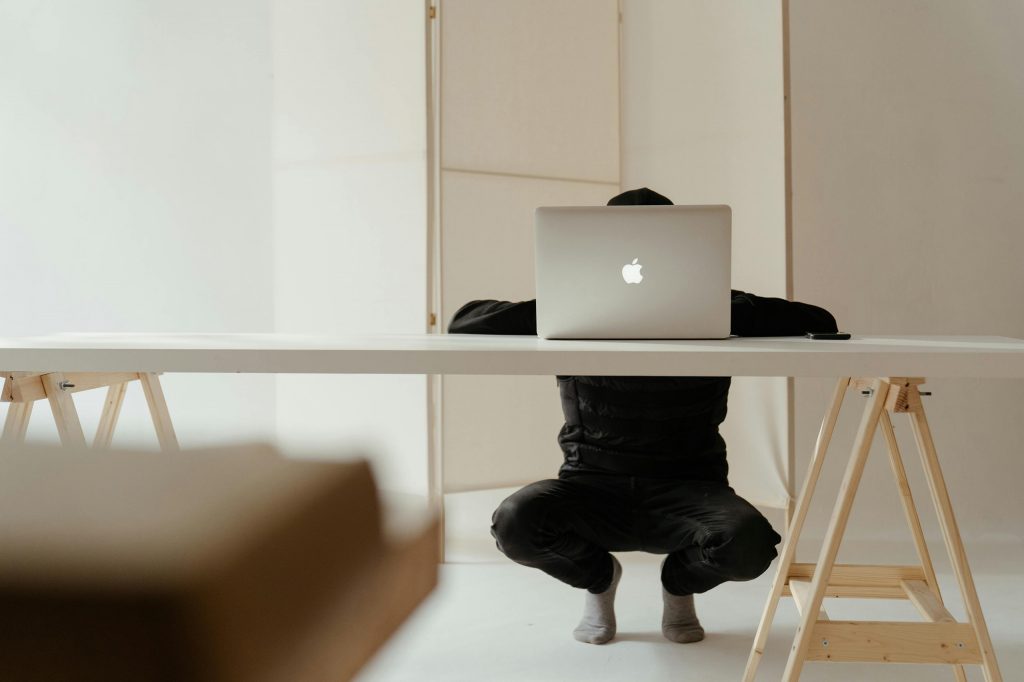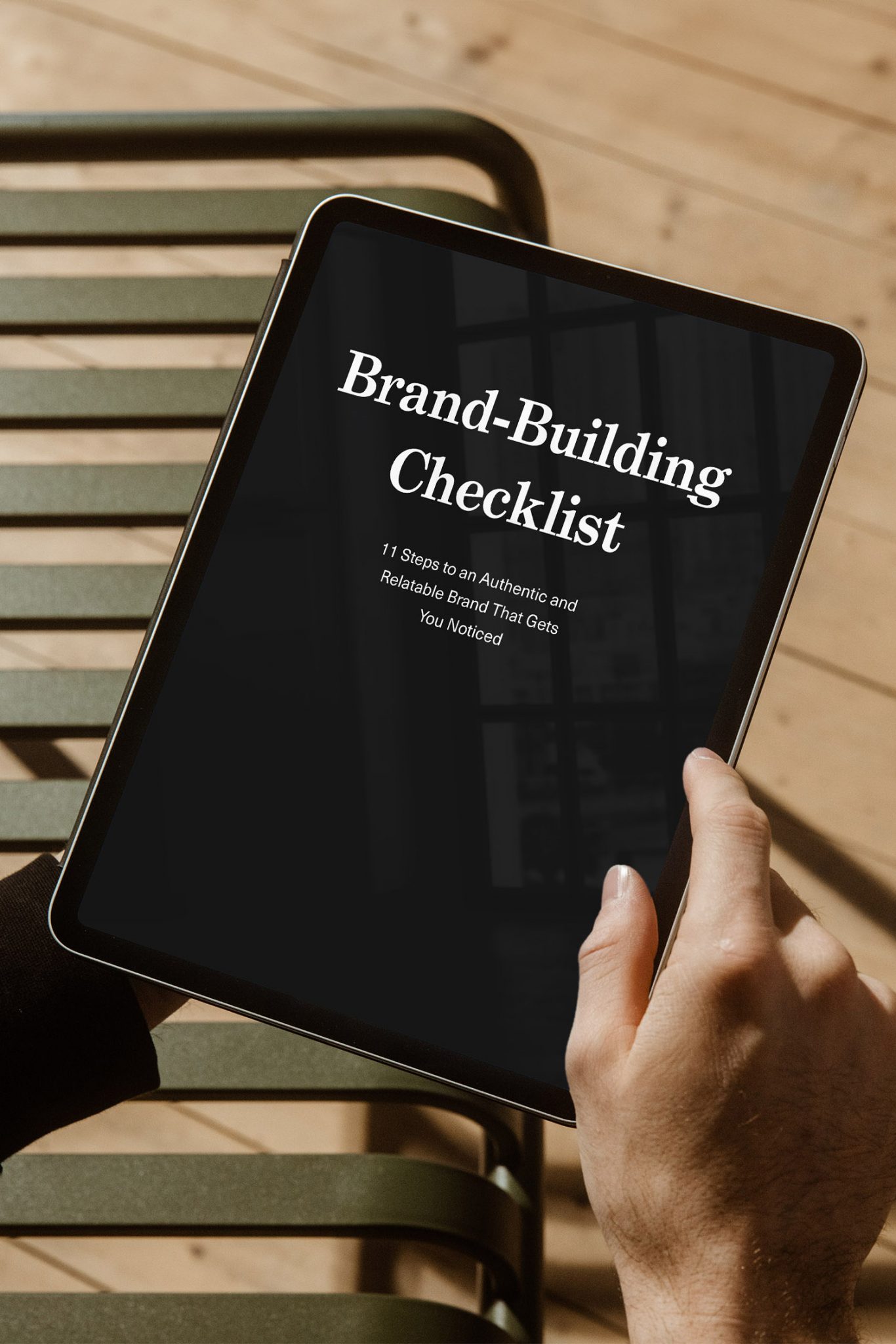Have you ever wondered why certain brands stick in your mind and others don’t? Some brands have logos, taglines or packaging features that immediately bring the brand to mind. Other brand elements don’t have quite the same impact. But why?
The difference lies in distinctive brand assets. Researchers found that strong brand assets are about 52% more prominent than those of their competitors. In other words, they are easier to remember and identify.
But what exactly are brand assets, and how can you develop and use distinctive brand assets for your brand? Let’s find out below.
What Are Brand Assets?
Before we get into distinctive brand assets, let’s take a quick look at brand assets in general.
Brand assets are all the elements created to represent, identify and differentiate a brand. They can be tangible, such as your logo or colours, or intangible, such as your brand story. Together, these assets shape your brand’s unique identity by being applied consistently across all brand collateral and touchpoints.
Your brand assets can include:
- Visual brand assets like your logo, colour palette, brand fonts, or mascot.
- Verbal brand assets, such as your tagline, slogans, or your brand’s tone of voice.
- Auditory brand assets, including jingles, voiceovers, or sound effects.
- Scent brand assets, like signature-scented environments, products, or marketing materials.
- Tactile brand assets, such as the materials and shapes used in your product, packaging, or retail environment.
- Symbolic brand assets, such as your brand values, brand personality, and brand storytelling.
What Makes a Brand Asset Distinctive?
Not every brand asset you design is automatically distinctive. A truly distinctive brand asset is one that people can instantly associate with a particular brand—even if the name isn’t visible.
You may hear terms like strong brand assets or iconic brand assets used interchangeably, but what really matters is the asset’s ability to trigger brand recall in a competitive marketplace.
Distinctive assets go beyond being attractive. They act as memory shortcuts, helping people to recall and recognise a brand at a glance, even without direct brand identifiers.
It’s important to note, though, that this level of recognition doesn’t happen overnight. It takes time, repeated exposure and consistent association with the brand for an asset to become truly distinctive.
‘Distinctive Brand Assets’ by Jenni Romaniuk
Jenni Romaniuk, author and researcher at the Ehrenberg-Bass Institute, coined the term ‘distinctive brand assets’ in her book “Building Distinctive Brand Assets.”
According to her, distinctive brand assets act as triggers that prompt consumers to think of a particular brand name without mentioning it.
Romaniuk stresses that for an asset to become distinctive, it must have both:
- Fame: It should be so well known that consumers instantly associate it with your brand.
- Uniqueness: It must be different enough to avoid being mistaken for another brand in the same category.
The simpler an asset, the better. According to research by Siegel+Gale, companies with simpler brand assets outperform those with more complex ones by 200%. So, you want your brand assets to be simple but not generic.
In the graphic below, your brand assets should ideally sit in the top right quadrant.

Real-World Examples of Distinctive Brand Assets
There are plenty of examples of distinctive brand assets, such as McDonald’s golden arches, the typical sound of starting a Mac computer, or Heinz Ketchup’s iconic glass bottle shape.
Here are a couple more examples:
Coca-Cola (Logo)
The Coca-Cola logo is so iconic that the brand can swap out its name for other words, and people will still recognise it. In 2011, Coca-Cola launched the ”Share a Coke” campaign in Australia, replacing the logo with popular first names on bottles and cans. Despite this change, the brand remained instantly recognisable.
This logo has been used consistently since the late 19th century—a key reason why it’s so well-known today.
Snickers (Logo)
Similarly, Snickers ran a campaign called “Hunger Bars,” using words associated with the word ‘hunger’ to replace its logo. And again, people instantly recognised the brand.
I should note, though that Jenni Romanuik found that we read logos holistically—interpreting the shape, colour, and font together. And I think that’s what happens in these examples.
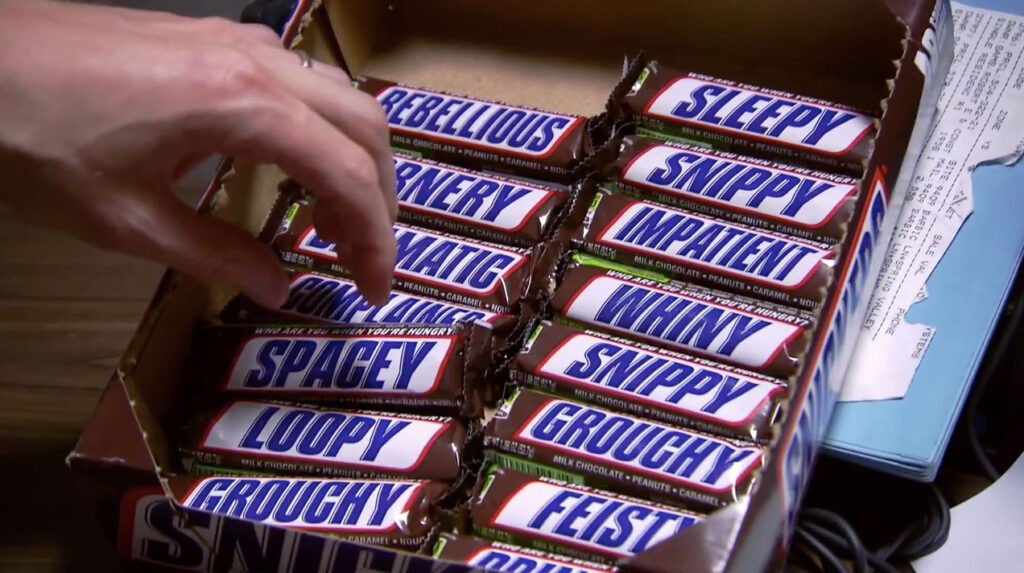
Tiffany & Co. (Colour)
Tiffany Blue® is a perfect example of a distinctive brand colour. The trademarked hue has become synonymous with Tiffany & Co., appearing on its packaging, website, and in retail stores.
But while colour is powerful for grabbing attention and evoking emotion, it’s not always easy to own. This is why colour is most effective when paired with other brand elements, such as logos or shapes. In fact, a report by Ipsos and JKR Global found that only 4% of colours tested immediately and uniquely brought the brand to mind and could be used in isolation.
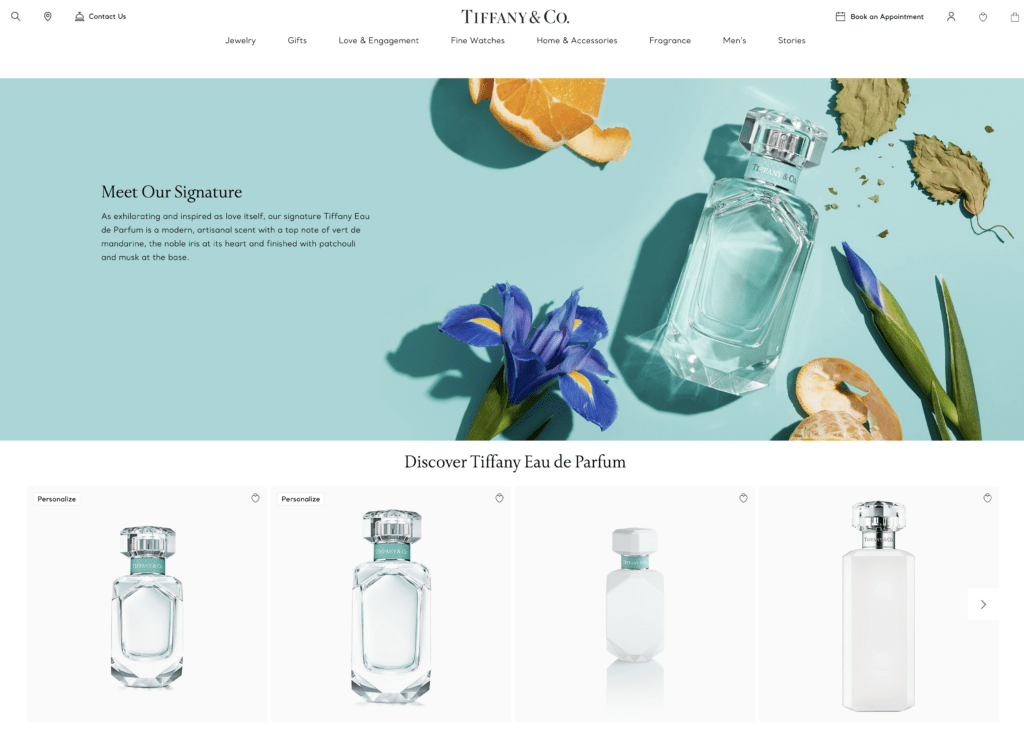
Air New Zealand (Typography)
A great example of distinctive brand typography is Air New Zealand’s custom typeface, designed by Designworks.
It’s also a reminder that just because a brand asset works for some people, it’s not automatically distinctive everywhere and for everyone. Living in New Zealand, I immediately associate this typeface with Air New Zealand. But for someone from Germany, the association might not work.
Romaniuk also points out that fonts, like colours, are not usually perceived in isolation and generally have a low cut-through. Still, they offer a high degree of uniqueness and can become strongly associated with the brand over time.
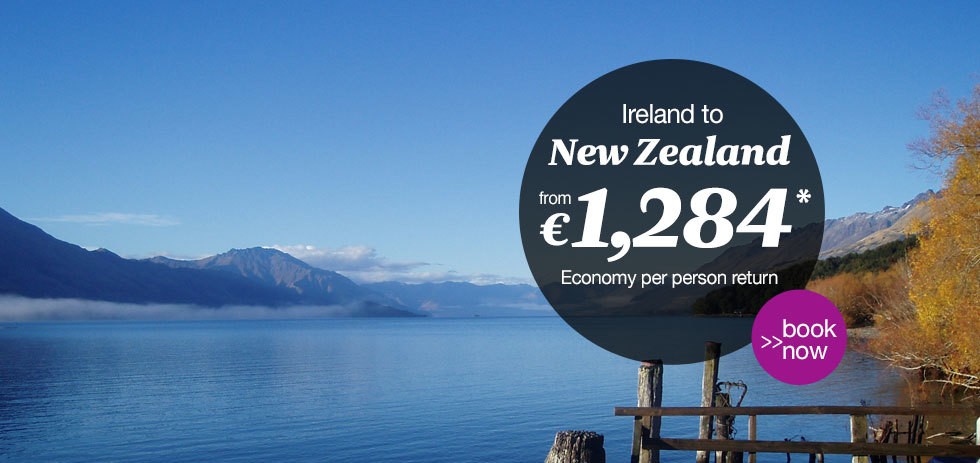
Nike (Tagline)
Nike’s “Just Do It” is a famous example of a distinctive tagline.
The tagline was created back in 1988 by the advertising agency Wieden+Kennedy and has since become one of the most recognisable taglines in the world.
However, according to the Ipsos and JKR report, only 6% of taglines can instantly and uniquely bring a brand to mind when used on their own.
That’s because taglines face a unique challenge. Being word-based, they compete not only with the meanings we already associate with those words but also with the brand name itself.

Toblerone (Packaging Shape)
Toblerone is an excellent example of a distinct packaging shape.
The iconic triangular shape packaging was introduced in 1908. The Matterhorn inspired the unique design of the chocolate bar. It has since become one of the brand’s most recognisable features.
Mini Cooper (Product shape)
The shape of a product itself can also become a distinctive brand asset. Take the Mini Cooper, for example. Its iconic rounded shape has become the brand’s signature, helping it to stand out in a sea of conventional car designs.
Michelin (Mascot)
The Michelin Man, Bibendum, is a great example of a distinctive brand mascot. Created by Michelin in 1898, he’s made entirely of white tyres. I still remember seeing him painted on the wall of the tyre shop where my uncle worked when I was a kid.
Mascots like Bibendum work particularly well in industries where they’re rare—helping a brand stand out.
The Ipsos and JKR report found that mascots, second only to logos, are among the most effective brand assets. Around 16% of mascots immediately and uniquely triggered brand recall when used on their own.

George Clooney for Nespresso (Face)
George Clooney’s long-term partnership with Nespresso has made him an instantly recognisable face in the brand’s campaigns. But have you noticed that outside of a Nespresso ad, his face doesn’t quite trigger the brand?
While celebrities like Clooney can grab attention, they come with challenges. Their existing associations can make it hard to establish a clear connection with the brand. People often remember the celebrity, not the brand (the “vampire effect”). Plus, when celebrities endorse multiple brands, it can create confusion.
That’s why long-term spokespeople who aren’t already famous often work better—they become more closely tied to the brand.
Burberry (Pattern)
The Burberry check pattern is an iconic example of a distinctive brand pattern. Initially used as a lining in its trench coats, the check pattern has evolved into a symbol synonymous with Burberry.
Today, there are several iterations of the pattern, with the original dubbed ‘Burberry House Check.’
The pattern is now featured on many of Burberry’s products, including scarves, bags, and umbrellas, reinforcing the brand identity and making them unmistakable.
Red Bull (Story)
Red Bull is a great example of a distinctive brand story built around the wings theme.
According to Romaniuk, brands can build a distinctive story in three ways:
Styles: Recurring themes that run through all brand communications (like Red Bull’s wings theme).
Moments: Actions or visuals tied to specific points in time, like twisting an Oreo or adding a lime to a Corona beer.
Components: Specific objects linked to the brand, such as the grey Whiskas cat or Apple’s white headphones.
Intel (Sound)
The Intel Sound is a great example of an audio—rather than visual—distinctive brand asset.
The five-note audio cue was composed by Los Angeles musician Walter Werzowa in 1994wings-theme and signals the presence of Intel technology in electronic devices.
But while distinctive, these sounds often lack the depth to forge a meaningful connection with the brand. The best way to use sound is to focus on characteristic vocal sounds, recognisable rhythms or jingles in which the name is mentioned.
How to Build Distinctive Brand Assets?
Here are some steps you can take to make your brand assets more distinctive:
1. Identify Your Brand’s Most Relevant Brand Assets
Decide which brand assets best represent your brand’s unique personality and identity.
These could be tangible brand assets, such as your logo or typography, or intangible ones, such as your brand story.
2. Define the Most Effective Brand Assets
Based on research, testing and observation, decide which assets are most recognisable and memorable to your audience.
3. Ensure Consistency Across All Brand Touchpoints
Apply your brand assets consistently across all brand touchpoints, including packaging, advertising, website, and social media.
This consistency helps people build strong memory structures associated with them.
4. Focus On Developing a Few Key Assets
Concentrate on strengthening a select few brand assets—those you’ve identified as relevant and effective.
Building distinctive brand assets takes time and dedication, and juggling too many elements at once will likely only dilute them.
Remember that sometimes, it’s the combination of two or more brand assets that makes them particularly distinctive—especially when it comes to brand colours. A clever combination can contribute to a unique and memorable brand presence.
5. Invest in Ongoing Monitoring and Evaluation
Regular evaluation can ensure that the brand assets remain successful over time.
Make adjustments if necessary. Eliminate brand assets that don’t work and concentrate on those that do. This goes beyond your personal taste!
When you follow these steps, you can build distinctive brand assets that come to peoples’ minds at the right moment in the customer journey.
Of course, your small business may not have the scale of a multinational corporation. However, the strategic development of recognisable brand elements can still help you build recognition and, ultimately, trust with your audience.
After all, when people see something repeatedly, they develop a sense of familiarity and comfort with it. This principle, known as the mere exposure effect, is a cognitive bias that holds true in branding.
Conclusion
In summary, distinctive brand assets are essential to building a memorable, strong brand.
Focusing on a few key brand assets and using them repeatedly and consistently across all your brand touchpoints can ensure your brand is instantly recognised.
If you enjoyed this article, you will also enjoy Jenni Romanuik’s book “Building Distinctive Brand Assets.”
If you buy the book through my link, you can support independent bookshops as well as my work here.
Feel free to reach out if you need help designing distinctive brand assets for your brand.
Disclaimer: This article contains affiliate links.
References
[1] Source: Ehrenberg Bass Institute
[2] Image source: Ad Week. Snickers Swaps Out Its Brand Name for Hunger Symptoms on Painfully Honest Packaging
[3] Image source: Tiffany & Co. Website
[4] Image source: Fonts in use
[5] Image source: The Sydney Morning Herald. Nike’s ‘Just do it’ slogan inspired by death row prisoner’s last words
Titel image by Alan Quirván





